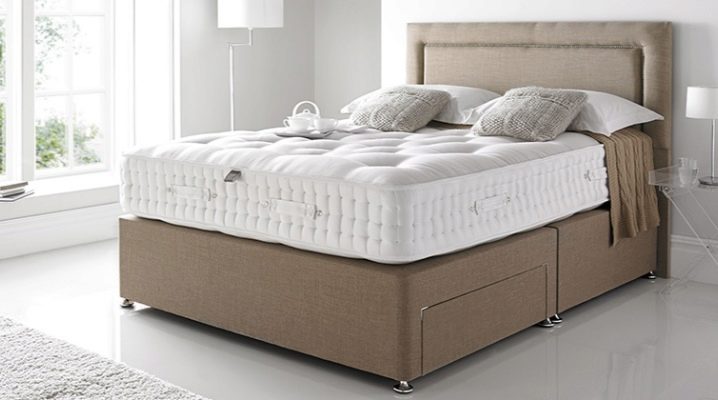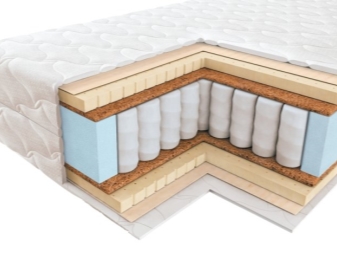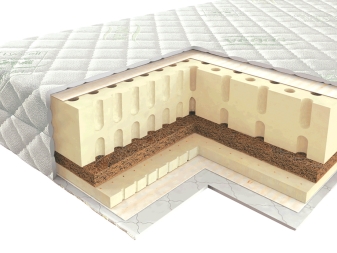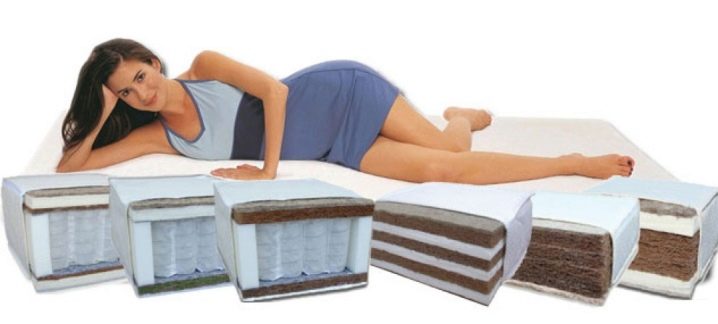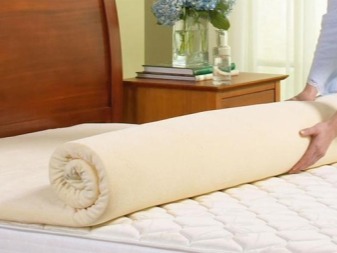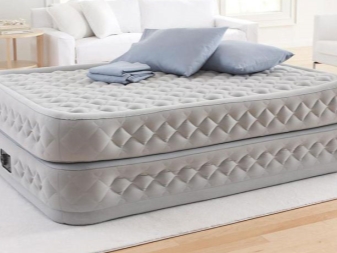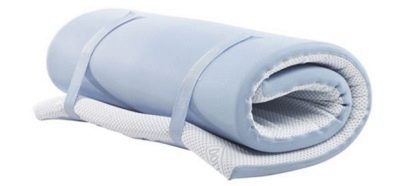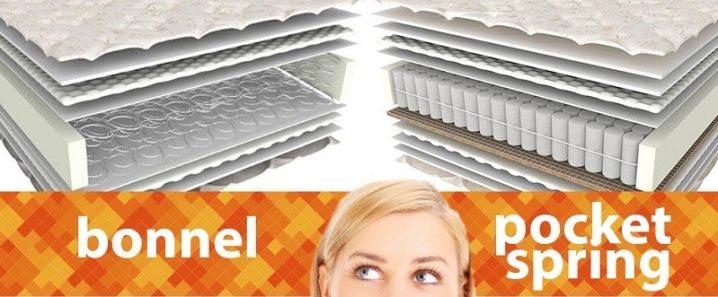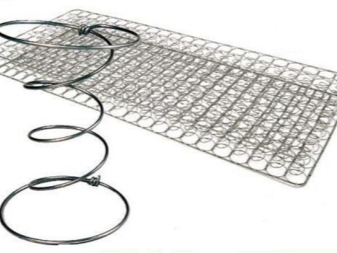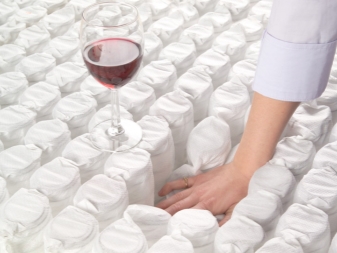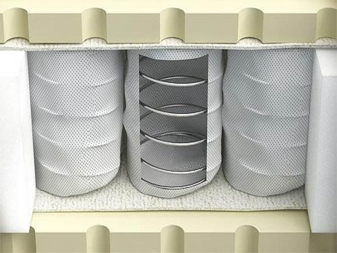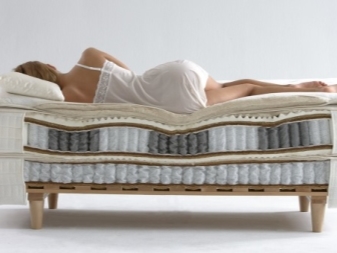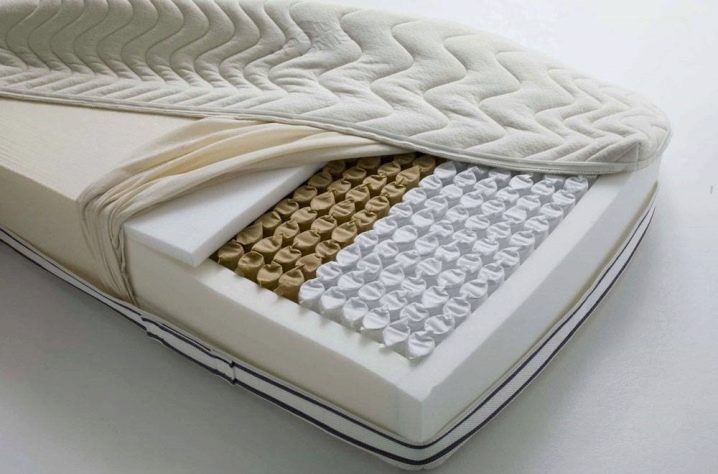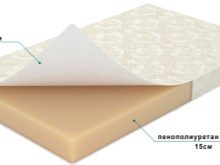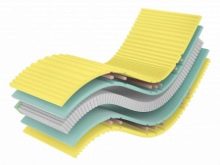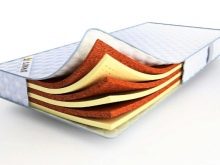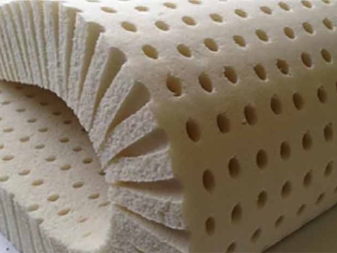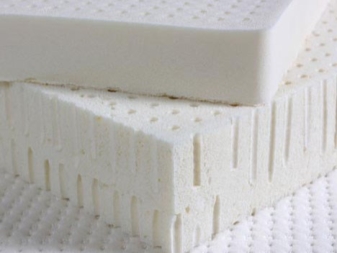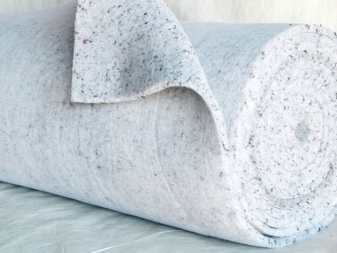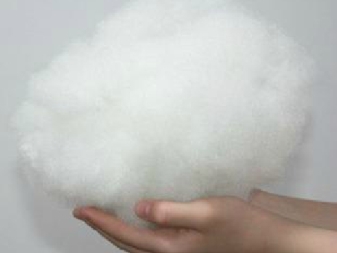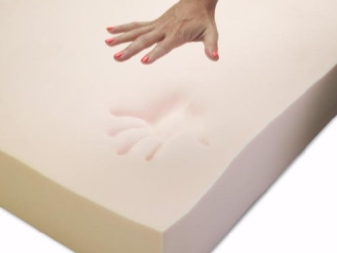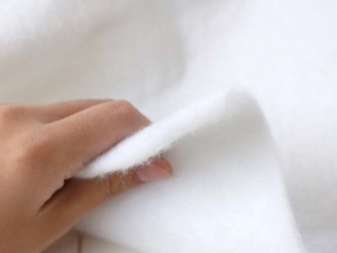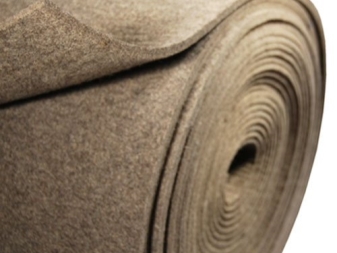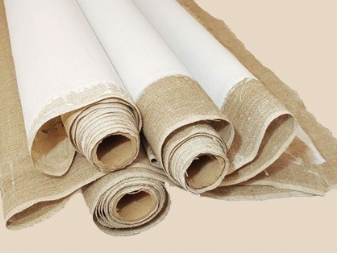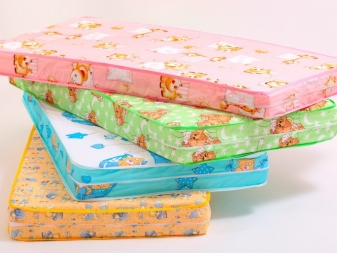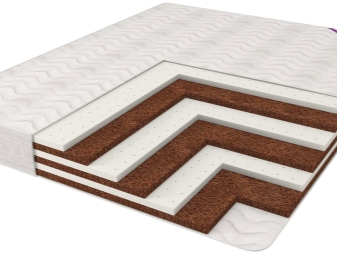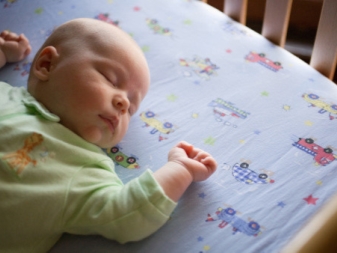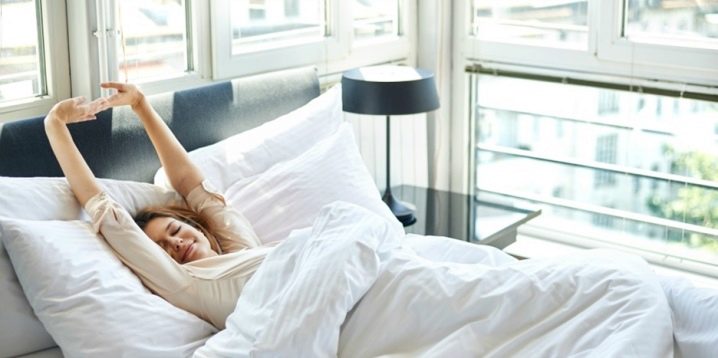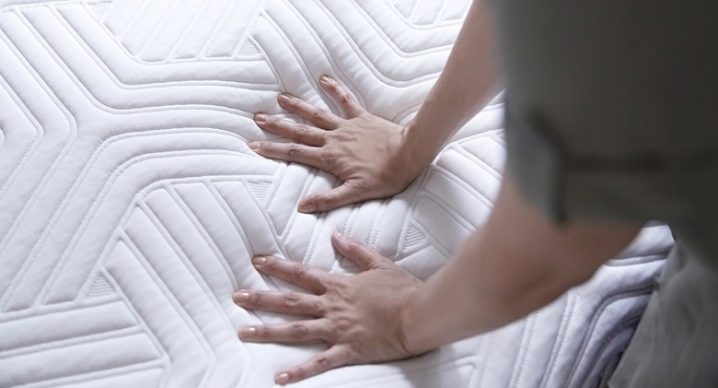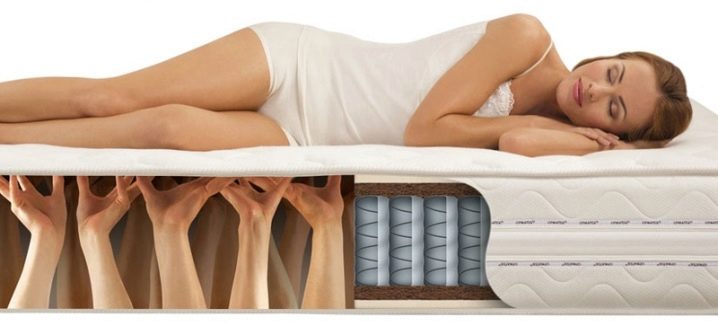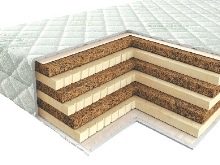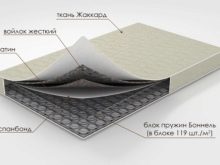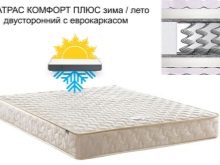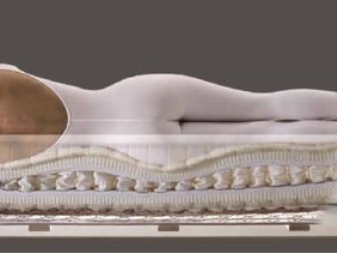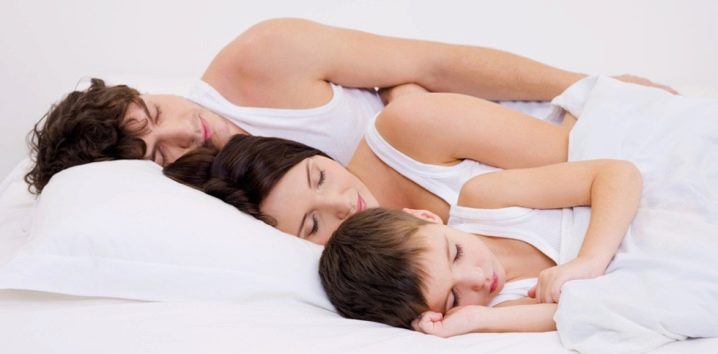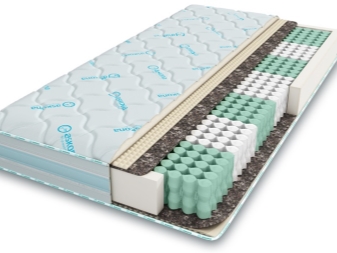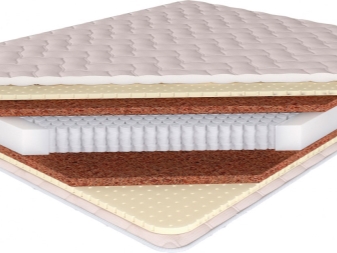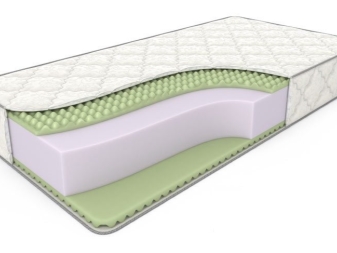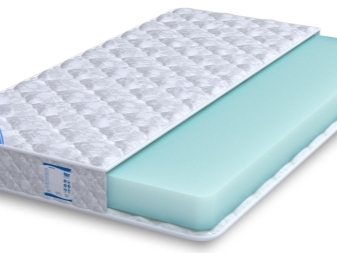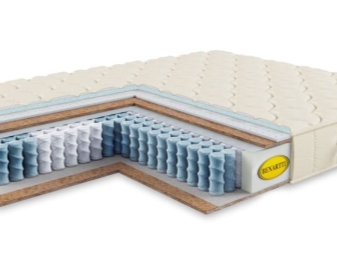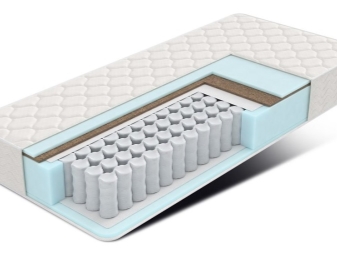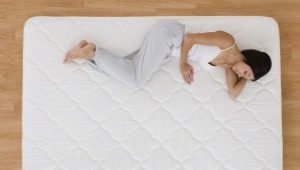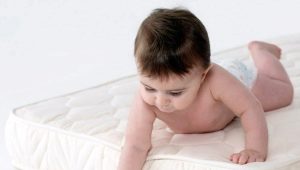Which mattress is better?
Every modern person thinks about the quality of sleep. If earlier only comfort was valued, today great importance is attached to the “correctness” of sleep: general well-being, the level of rest per night, muscle relaxation and a positive mood for the coming day depend on it. Choosing a quality mattress, you need to know which one is better than it is different from other analogues, what are its strengths and weaknesses.
Special features
To understand what exactly the user needs, it is important to know all the nuances of each type of block, especially its structure, the necessary degree of back support, the presence of an additional effect, and the weight of the person.
There are two types of mattresses:
- on a spring basis;
- without springs.
In addition to them, there are still inflatable options, but if there is a question about buying a useful mattress for every day, you should stay at the first two.
Each type of mattress has a different degree of rigidity, which determines its characteristics. Both spring and springless mattress can be:
- softdesigned for a user weight of more than 90 kg;
- moderately tough - product for the main circle of users of average weight;
- tough - A special option with the prevention of certain diseases, as well as the best type of mattress for babies whose spine does not yet have the necessary bends.
Depending on the size and shape, both types of mattresses can arrange a bed on the bed, sofa, folding chair, folding bed and even on the floor.
And those and other mattresses can have different block heights, which affects the complexity of the structure and additional effect. Spring designs are in height from 15 to 24 cm and more. The average thickness of mattresses without springs is 12-19 cm. However, if springless models become mobile when the thickness is reduced and they can be carried and stored twisted in a roll, the spring counterparts do not bend, they are much more inconvenient to transport.
One of the varieties of springless mattresses are toppers (thin mattresses with a thickness of 2 to 10 cm). They are able to organize an extra bed in case of arrival of guests, are relevant in the campaign, in demand during yoga.
Spring
Spring mattresses are divided into two types:
- Bonnel - dependent type models;
- Pocket - construction of an independent plan.
Each of these blocks has a steel core, equipped with vertically arranged twisted elements that are attached to the frame. The difference between the models is the method of fixing the springs among themselves.
In models of the dependent plan, the springs are interconnected, therefore, in the process of operation, a creak is emitted. Due to such a connection, in addition to the operating springs, the adjacent springs are also included, which creates wave formation.
Often in such mattresses use springs "hourglass". Due to the special shape of the elements, it is possible to get rid of the contact of the springs, to reduce the weight of the steel core, but the lateral deformation, which the elements themselves are afraid of, cannot be avoided.
These mattresses do not provide the necessary support for the spine: no matter how hard the user tries, his body will not be able to assume a natural posture. Consequently, the body will be harmed, and not only the back will suffer: the blood flow will be disturbed, the work of the metabolic processes will worsen, and the health problems of the sick people will worsen. Even with the addition of the upper and lower edges of the mattress will not find excellent orthopedic properties. Basically, such models are a budget line and are not designed for long life.
In the mattress on the basis of independent springs, twisted elements are mounted on a solid base. They are not interconnected, but packaged in individual cases of breathable textiles. Integrity of the core is created by connecting fabric covers. Thanks to this method of attaching the springs, the load is created evenly and pointwise. The springs involved in the block have a cylindrical shape, slightly narrowed at the edges.
Such steel elements work separately, without needing the help of adjacent springs. This gives the body proper support during sleep, regardless of the person’s posture (lying on the stomach, side, back).
However, not everything is so simple: if the spring in the filler is small, it will not create support in the right amount. If you need a good, high-quality and practical mattress, the springs themselves should be small (about 4-6 cm in diameter).
A model worth considering as a purchase is a mattress with double independent springs. Its only difference from the analog is the presence of a second spring of smaller diameter, screwed into the larger one. Such mattresses are especially durable: in normal operation, external elements are involved.Smaller springs are connected only in case of increased pressure on the mattress.
Number of springs: how much is needed?
On average, the number of springs per square meter can range from 100 to 2000 pieces. If this indicator is small (from 100 to 300 pieces), the springs have a large diameter, so the surface of the mattress is soft. Such a block is impractical, even if surrounded by several layers of dense padding.
For those who prefer medium-matt versions of the mattress, you can pay attention to products with the number of springs from 400 to 600 pcs per square. m. However, it is worth taking note: in order to increase the chances of sale, sellers can indicate the total number of springs. Seeing the figure of 1000, you need to ask what the number is: common or compound. Then it is easier to understand what properties the mattress will have.
Another nuance is the thickness of the wire: ideally, one should be at least 2 - 2.5 mm. Steel elements with such an indicator are considered the most durable and of high quality, they are less susceptible to deformation.
Springless
Springless mattresses are in the spotlight today. They are made from modern raw materials of natural and artificial origin, and according to the way the block is structured:
- monolithic - solid layers without an additional layer of stuffing;
- combined - having a thick core at the base, supplemented on the sides, the upper and lower faces by the addition of a different structure;
- puff - representing a block of identical in thickness, but different in composition and density fillers.
The filler itself is different: it allows you to vary the degree of rigidity, selecting the best option for each customer. It is on the basis of the springless unit gets its name (latex, coconut, etc.).
The line of fillers is quite extensive, among the most popular packings can be noted:
- natural latex - elastic elastic material with a multi-level distribution of the load;
- synthetic latex - polyurethane foam of type HR with latex impregnation;
- coconut coir is a product of coconut pericarp;
- struttophiber - bulk fiber of dense structure with vertically arranged fibers;
- hollofayber - fibrous packing of polyester in the form of a kind of elastic springs;
- memorix - viscoelastic foam with anatomical properties,receiving and memorizing comfortable position of the user;
- synthetic winterizer - an additional layer to ensure the softness of the surface of the mattress;
- felt (sheep and camel wool) - non-woven textile filler made of felted wool, surface insulation with “dry” heat;
- cotton and linen are small layers to add a refreshing effect.
The use of these products for the spine is today recognized by orthopedic doctors who recommend some of the models as prevention of diseases of the musculoskeletal system.
The uniqueness of the fillers is that they are perfectly combined with each other, while allowing you to give the block the desired properties. In most lines of springless mattresses, proper back support is created.
Specifications
Having understood the difference between the structure of spring and springless blocks, you should pay attention to their operational characteristics.
If we compare the orthopedic effect, springless mattresses lead in this. Among both types, you can choose good options, but if effective prevention is needed, you should purchase a mattress without springs.
Despite the fact that companies offer different age ranges in each form, spring units are not suitable for infants and toddlers of primary school. No matter how hard they were stuffed, it would not support the spine in the right amount. In addition, they have springs that accumulate static electricity, which has a negative effect on the body (headaches, dizziness, anxiety, irritation).
Springless mattresses do not creak, they are harder, do not roll to the edges, are made of hypoallergenic material that does not irritate the skin. In the best models (from latex and coir), they have 7-level support, which is different in each area of the mattress. This allows the body to always be in the correct position, so on such a mattress sleep is always full.
If a mattress is purchased for a child to prevent diseases of the spine, springless products, along with a set of physical exercises, contribute to recovery by providing gentle body support and relieving pain. And the hard surface of the mattress does not bite into the body at all, as it may seem at first glance.
Spring analogues have an orthopedic effect, but not so pronounced. Such mattresses are good for a comfortable sleep, they can be of high quality, supplemented by orthopedic stuffing, but will not give the desired result. In addition, the purchase can not do without taking into account the weight: if it does not match, the springs simply will not stand and break.
As for the minuses of springless blocks, they also need to be taken into account by the user's body: rigid products can break, despite the elastic filler. In addition, jumping and jumping on them is unacceptable.
The advantages of springless designs include:
- noiselessness at operation;
- The "correct" orthopedic line for children (from birth), adolescents and adults;
- long service life (8 - 15 years and up to 20);
- resistance to dust formation;
- prevention of mildew and mildew environment;
- possibility of use in a baby carriage or cradle;
- easy replacement of any layer in the presence of pushing;
- transforming toppers into mattress covers in order to level the bed (important for sofas, masking the dents of existing mattresses);
- the presence of a natural removable cover with and without filler.
Advantages of spring mattresses are:
- reliability and durability of the unit;
- long service life in models of independent type (up to 20 years);
- solid composite filling, giving the desired effect;
- quilted removable case with padding;
- the ability to replace individual broken items.
Summing up, we can say: if health allows and comfort is needed - you can buy an independent spring unit. If the benefits are important, it is better to take a closer look at the composite springless latex mattress.
Rating models
Today, the concept of "classic" mattress means an economy class option that has no orthopedic effect and is made up of inexpensive components. Such products are at the bottom of the popularity rating: the whole thing is the lack of reliability and the additional effect, which is today an indispensable attribute of each quality mattress.
One of the most popular models for spring and springless basis are:
- orthopedic mattresses - models with a latex filler and a coconut layer;
- bilateral options with varying degrees of surface rigidity - mattresses with a rigid one and medium-hard other side;
- double-sided mattresses with heat regulation - unique winter-summer designs with a warm one side (wool additive) and a refreshing (cotton, linen) second;
- bilateral products with asymmetry - options for two, with different degrees of support for the two halves of the block, taking into account the different weights of partners;
- anatomical mattresses are products that gently envelop the body, receive and store a comfortable position of the user, and restore their structure during cooling.
In addition, springless toppers are popular. They are purchased as inexpensive, soft guest or cottage mattresses, as well as decor items in the Oriental style (toppers originate from futon - the traditional “beds” of the 13th century Japanese poor).
Of springless mattresses, composite models of latex with a coconut additive, anatomical and polyurethane foam are particularly popular. For children, monolithic structures of latex and coconut with thermoregulation and varying degrees of rigidity of the two sides are more often chosen.
Those who prefer spring-based sleeping mattresses choose models of independent type with two systemsMicropackage"And"Multipack".The first products have medium rigidity, the second ones have a greater surface density and a smaller diameter of the springs (about 2.5 cm).
Manufacturers Overview
Quality products are found in many manufacturers, both imported and Russian. And often the same company produces spring and springless models that are equally good in quality and performance.
The leaders in the production of high-level mattresses include:
- Askona –The trademark of Russia, which produces a wide range of mattresses on a spring and springless basis for different ages, build and number of beds. Depending on the model, the maximum permissible load on a berth can be up to 140 kg.
- Consul - a company with a leading position in its segment, producing certified mattresses with and without springs, taking into account the latest technologies and medical indicators for users of different ages (with dividing lines, making it easier to choose).
- Dreamline - manufacturer, producing high-level products of monolithic and mixed plan with and without springs with excellent practical and quality characteristics.
- Promtex Orient - Moscow factory-manufacturer of mattresses for all categories of users (including the elderly and the sick), producing classic and prophylactic mattresses with an individual approach to each client.
- Benartti - the developer of "breathing" mattresses with a maximum load of up to 140 kg, offering products for users of medium and large weight, using high-quality raw materials, implying long-term operation.
- Ormatek - a brand that produces tested products for all family members, monolithic and combined type of different degrees of rigidity with the presence of an additional effect.
Reviews
Buyers priorities are different. Most of them prefer domestic products (Askona, Ormatek), since today the quality of Russian mattresses is not inferior to expensive imported counterparts. These products are silent in operation, fairly durable, optimally solid and incredibly convenient and comfortable - write in the comments buyers.
Opinions about the type of block are contradictory: one likes springless options, their density, elasticity and lack of springiness. Others are accustomed to models with springs, so put them in first place,noting reliability and durability.
For details on which mattress to choose, see the following video.
